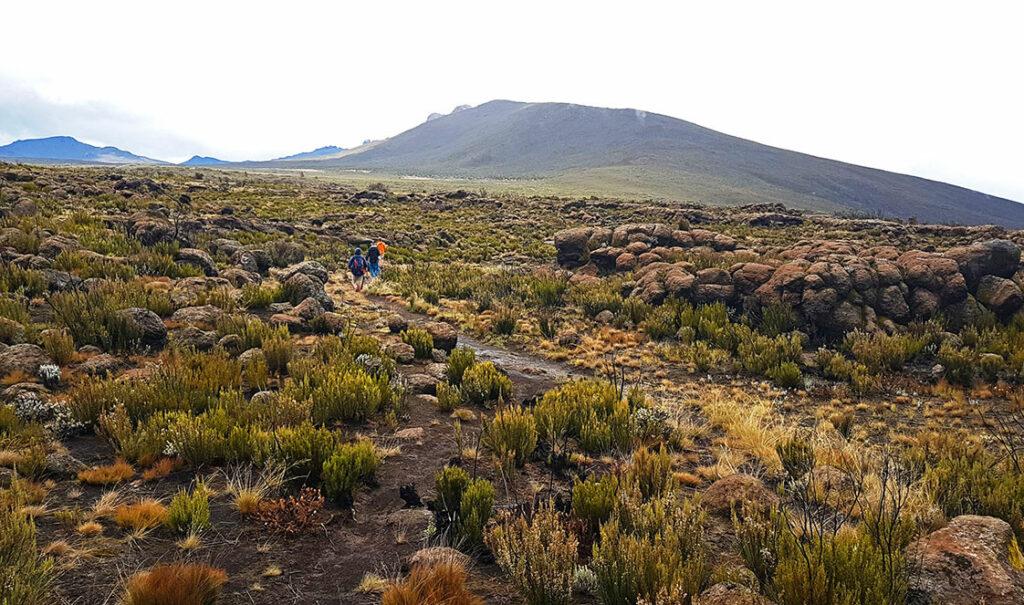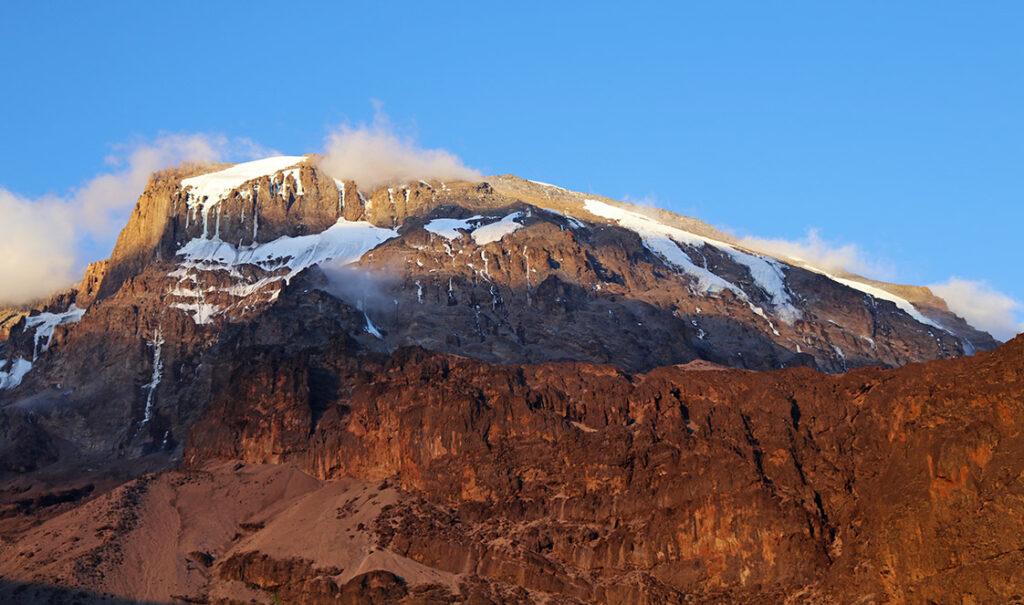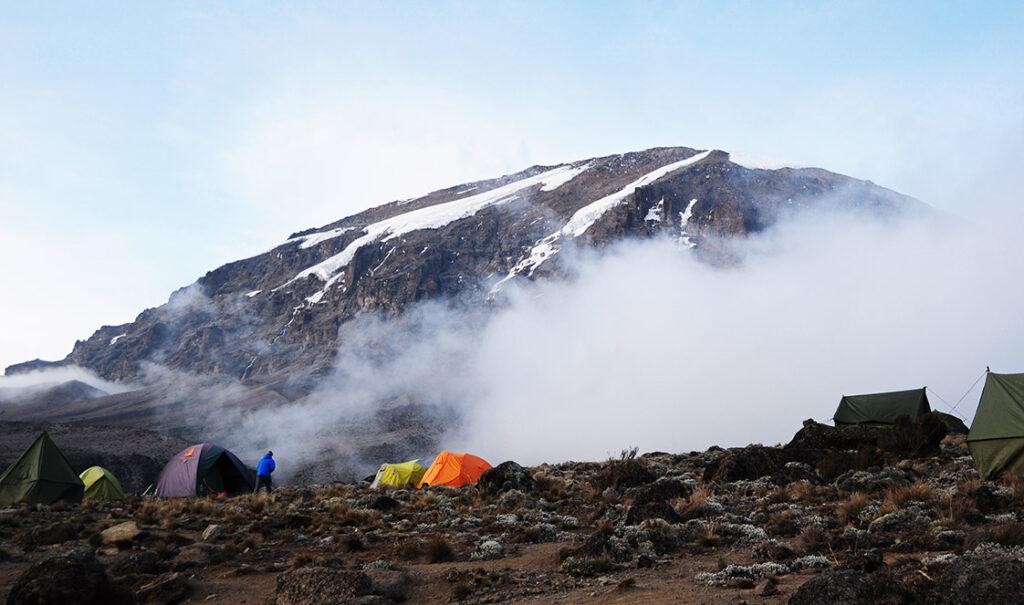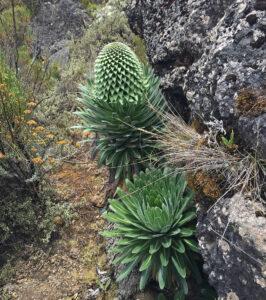Mount Kilimanjaro National Park
1,668km² (641mi²)
1921 (Forest Reserve) | 1973 (National Park) | 1987 (UNESCO World Heritage Site)
June to October
From thick rain forest to alpine desert
Located in northern Tanzania, Mount Kilimanjaro National Park is home to Africa’s highest mountain. You can trek to the top, go on guided walks, watch birds, and visit waterfalls. The mountain’s three volcanic peaks were formed thousands of years ago to create today’s iconic shape. The last to form was Kibo, the tallest central peak. Shira to the west is the oldest, followed by Mawenzi in the east. In 1987 it became a UNESCO World Heritage Site thanks to its distinct geological features, five vegetative zones, and unique wildlife.
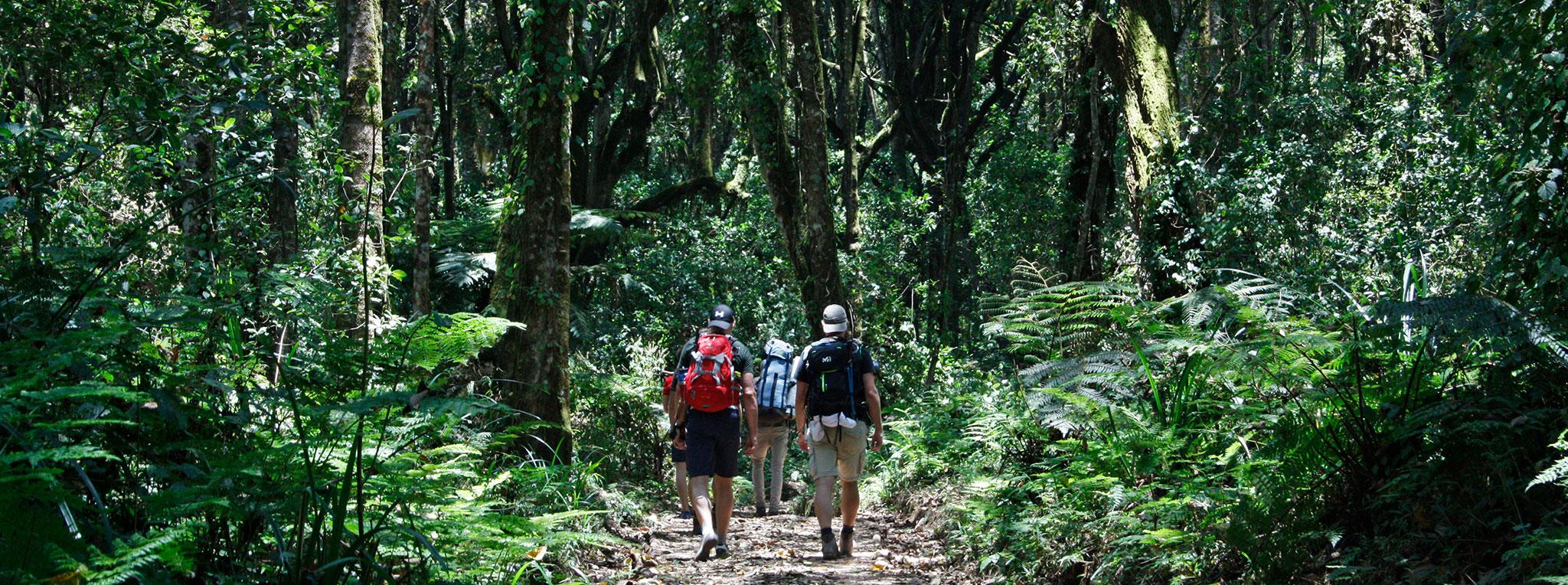
Mt Kilimanjaro National Park: Home to Africa’s tallest mountain
Kilimanjaro National Park is home to Africa’s highest mountain and the highest free-standing mountain in the world. In 1987 the park was declared a UNESCO World Heritage Site thanks to its unique geological form rising from the flat savannah, its diverse wildlife, and its multiple vegetation zones.
Mount Kilimanjaro consists of three peaks. The highest central peak is called Kibo (5,895m) and is a dormant volcano. It is flanked by the smaller Shira in the west (4,269 m) and Mawenzi in the east (5,280 m). However, both are extinct, whilst Kibo last erupted 150,000 and 200,000 years ago and could in theory awaken any day.
Vegetation in Mt Kilimanjaro National Park
The mountain’s vegetation is extremely varied with ~2,500 plant species. Two striking flowers include the endemic Impatiens Kilimanjari, which is a beautiful orchid-like plant and the beautiful Violet Viola Eminii.
~140 tree species can be found in the lush green belt of montane forests. The next vegetative zone, a heath and moorland, is where Giant Lobelias grace the landscape. The alpine desert zone above 4,000 m looks like a moonscape – full of rocks and dust. From the top of Kibo hikers will be rewarded with views of glaciers and three huge concentric craters.
Activities & what to do
The majority of the park’s visitors are hikers with the same goal in mind – to make it to Africa’s highest peak. Our trekking Mount Kilimanjaro page is a good place to find out more.
Scratch deeper and you will discover that one of the best ways to experience the park with its outstanding views, plants and wildlife is during a 4-hour guided walk to the Shira Plateau.
A wealth of wildlife can be seen on your journey there. ~140 mammal species live in the park and on the drive through the montane forests you may get a chance to see 87 of the forest species, such as the Colobus Monkey and the Mitis Monkey. Elephants, leopards, buffalos, and various antelopes including the endangered Abbot Duiker live here. So do ~179 highland bird species and 24 bat species.
But hiking and plantlife are certainly the focus of a visit to the Kilimanjaro National Park. The Shira Plateau walk starts at 3,500m and it is your chance to take in its sounds, and smells, and colours. Enjoy outstanding views of Kibo; the vast plains of Kenya’s Amboseli National Park and the deep Simba River gorge. At the Shira Crater rim stop to see the volcanic cones dotting the landscape. Go at your own pace; enjoy a picnic lunch and discover the wonders of Mount Kilimanjaro National Park.
Five Vegetation Zones
This park is home to five zones each with very distinctive vegetation. The five zones are the lower slopes, montane forest, heath and moorland, alpine desert, and summit.
Africa's highest Mountain
This park is home to Africa’s highest mountain, but did you know there are three peaks and that it is 40 km wide.
62km in 6 days
Hiking along the popular Machame Route all the way to the summit and back covers a distance of about 62km (37mi). But it’s the altitude that makes the climb a challenge, not the distance.
WHEN TO GO
Best time to go to Mt Kilimanjaro National Park
In Mount Kilimanjaro National Park, it is possible to experience 4 seasons in one day all year round. Saying that, the best time to go to Mount Kilimanjaro National Park is during the dry-season from June to end of October. This season is the period with the best weather on the mountain and the chance of cloud cover obscuring your view is much smaller. Evening and morning temperatures plummet and frosts are common, so remember to pack warm clothes. The park is still accessible during the two rainy periods from November to December and March to May, however the weather is less favourable.
Dry Season
June to OctoverBest for walking the trail to the Shira crater or climbing to the summit of Kibo
Shoulder Season
May to June & December to FebruaryThe best time to experience the national park with fewer people.
Why to go
Much more than just trekking to the summit
You go to Mount Kilimanjaro National Park because you want to experience this unique place with its fascinating five vegetation zones, unique wildlife, and incredible views. It is a beautiful World Heritage Site.
Even if you don’t want to climb the mountain, a moderate four-hour hike to the rim of Shira is the best way to experience the plants, landscapes, wildlife, and stunning vistas.
A visit to this park is a highlight for keen photographers as it is possible to take some iconic photos of the area. Walkers, bird watchers and anyone keen on nature will love this park.


We are back from Tanzania with wonderful experiences and memories – and the summit certificate for our Kilimanjaro climb! We really did make it to Uhuru Peak and only thanks to our great Guides Batchi and Elisa. Both were very professional and took such great care of us. Their calm attitude encouraged us; and their support especially when covering the deciding metres in high altitude was amazing.Michael & Laura | Mt Kilimanjaro Climb
Where to stay near Mt Kilimanjaro National Park
Location
Kilimanjaro National Park is located on Tanzania’s northern border with Kenya. It is easily accessible as it is only ~120km (75mi) from Arusha’s international airport. The park’s headquarters, and a popular entry and exit point, is located at Marangu gate 39km (24mi) away from Moshi. There are seven other gates, including Londorossi, Lemosho, Kilema, Rongai, Mweka, Machame, and Umbwe. Huts and campsites are dotted throughout the park. Mkomazi National Park, only 170km (105mi) away is a great place to visit afterwards to stay in some beautiful accommodation and to see the Black Rhino and Wild Hunting Dog.
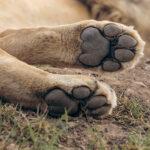

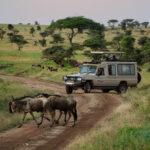
Experience Tanzania with us
Speak to one of our travel experts
Let's start planning your trip!
We will get back to you within 2 working days.
 on Tripadvisor
on Tripadvisor





